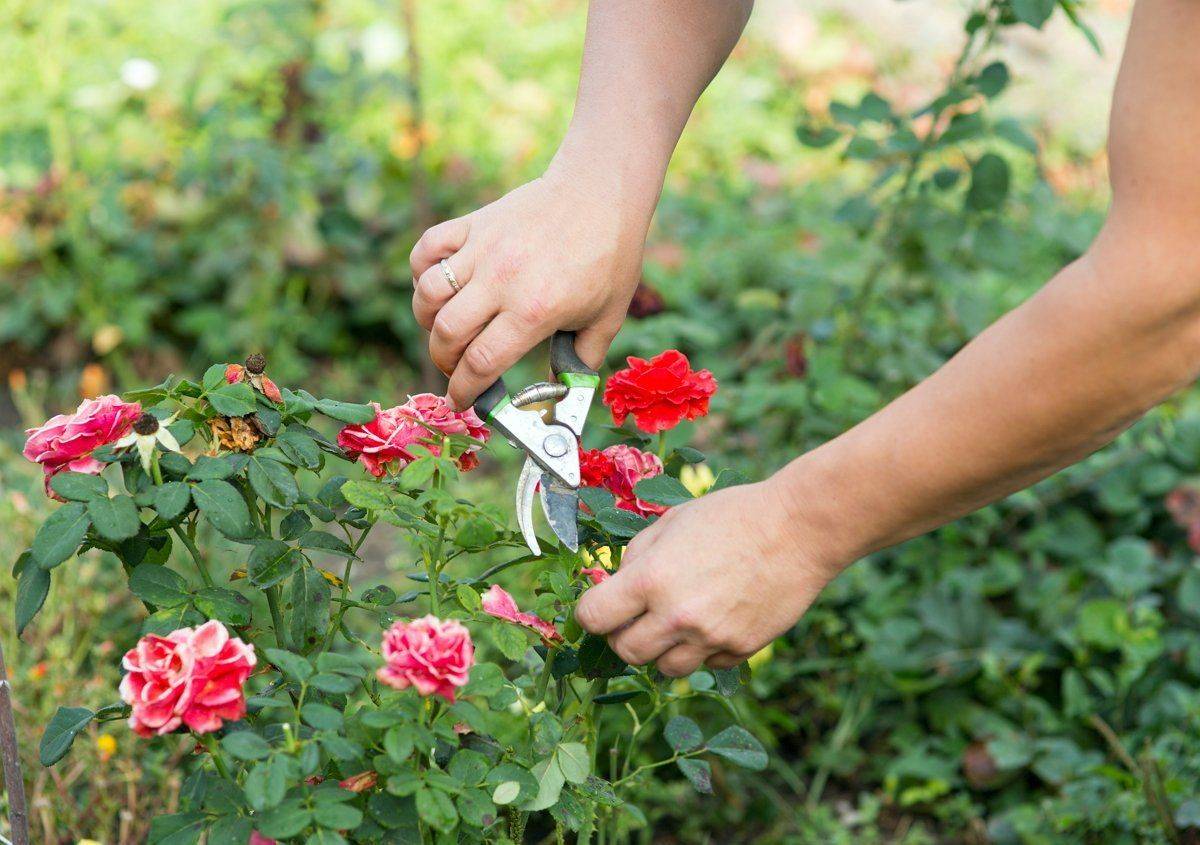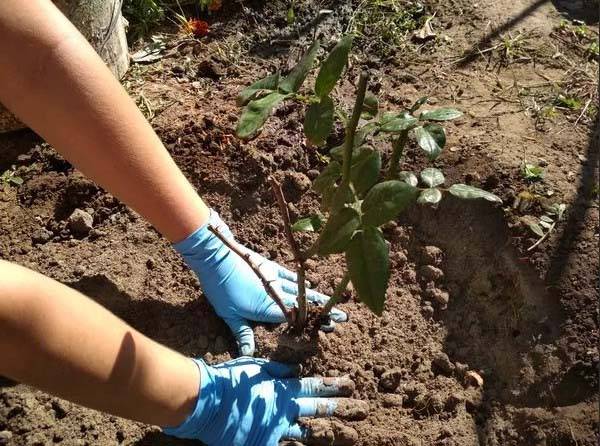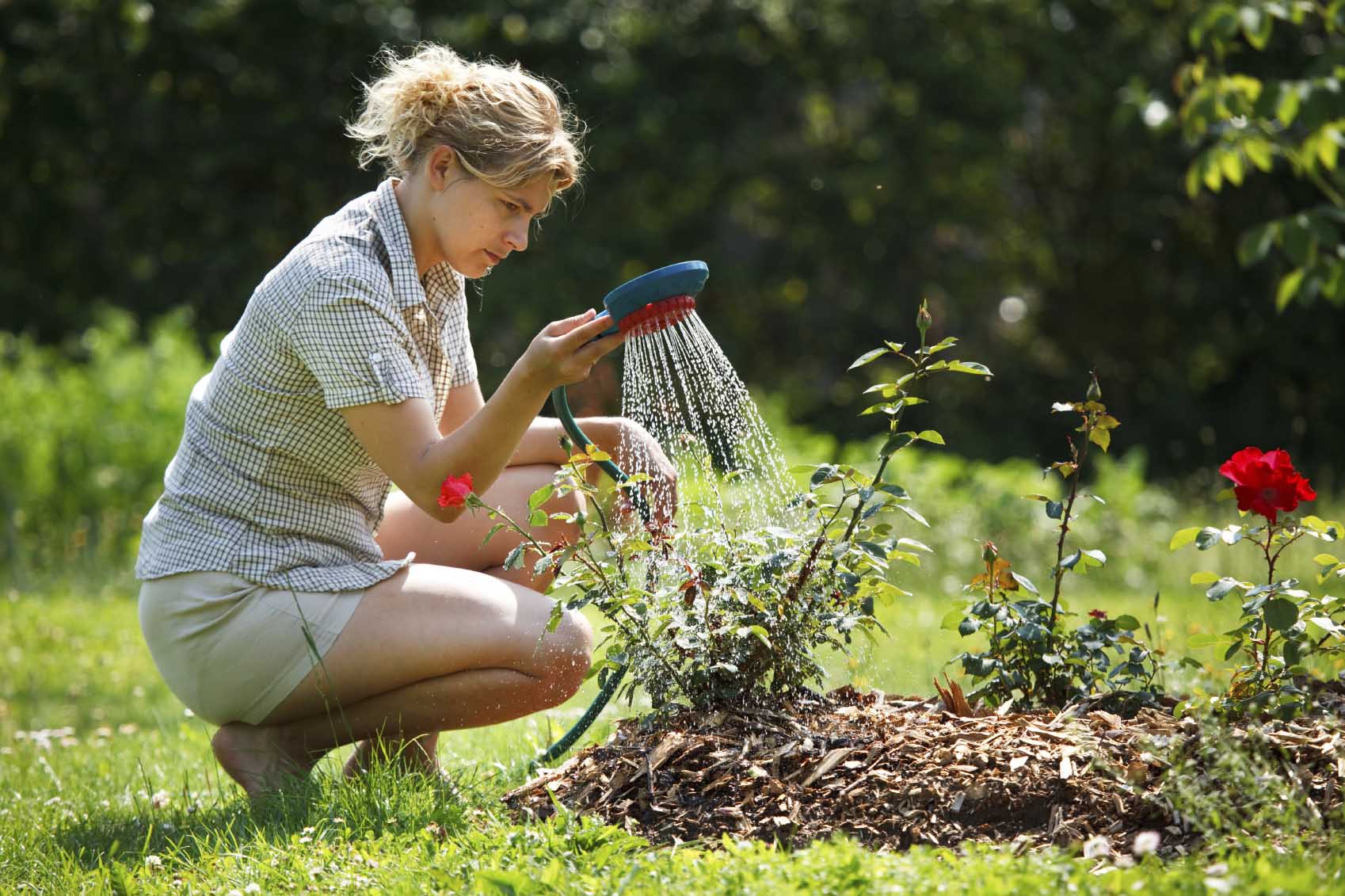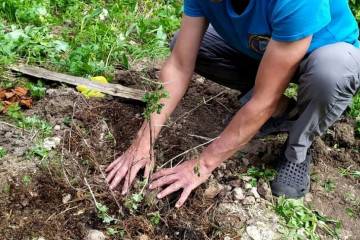When to transplant roses from one place to another
Content:
Flower lovers often have to transplant not only annual and young plants, but also those that bloom every year and were planted a long time ago. There can be a huge number of reasons for this: from freeing up space for construction or planting other plants and trees to situations when you need to give someone a bush of a perennial plant. This material will describe in detail what features a rose transplant has and when to transplant roses from one place to another.
When can you transplant roses from one place to another?
For some reason, many people believe that the rose is a whimsical plant. He is constantly missing something. As for transplanting roses, in this regard, they can hardly be called capricious. Moreover, when performing such a procedure, the plant shows itself from a very persistent and hardy side. Flower bushes are able to withstand a long stay outside the ground and practically not experience stress when taking out and transferring. They can easily be mastered in a new place if there are enough nutrients in it.

One of the reasons for the transplant is the desire to create a composition elsewhere in the garden.
Reasons for transplant
It so happens that the rose grows very much and begins to interfere with other plants or a person. For example, he planted her at the entrance to the site, and after a while it was impossible to walk past her: the bush simply blocks the road. Due to overgrowth, the flower lacks nutrients, it blooms poorly or ceases to give flowers at all. Do not exclude the death of the plant after a while. This happens because the person initially chose a bad place for planting and did not care that the flower would be cramped in it.
There are other reasons, for example, you urgently need to plant a new plant in this place or make a beautiful flower arrangement in another place. If you want to propagate a bush by transplanting, then the best time for grafting will be very. Almost all perennial and flowering plants need periodic replanting. This also applies to berry species.

A transplant is necessary if the plant has grown very much or interferes with the passage of a person
Suitable timing for transplanting roses
The best time to transplant rose bushes is in early spring and late autumn. There are several nuances of the autumn transplant, which directly depend on wintering. It is a serious problem for a weak and freshly transplanted flower. That is why the terms of the autumn procedures are limited to the end of August and the middle of September.
Very often, thoughts about redeveloping the site visit the heads of gardeners in the summer, when all the young seedlings have long been planted, and winter troubles are still far away. It is worth saying that the summer period is not the best time for such procedures, but sometimes there is simply no other way out, because an overgrown plant may die, or it constantly interferes with the passage.
At what time of the year is it done: in spring, summer or autumn
In principle, a transplant can be performed both in the summer and at any other time.It should be understood that in this case, the rose requires maximum attention and careful care. Better to sacrifice the beauty and flowers in the current year and cut it back so that everything goes as well as possible. Hence the impression is that the rose is a demanding and capricious shrub.
If the bush itself is large, then you can leave a maximum of 50 centimeters of the stem with leaves. In the case when there are many flowers and shoots on the bush, it is best to partially or completely cut them off. This will give the shrub shape.
In the first 30 days after transplanting, it is recommended to water the rose as often as possible, but the main thing is not to overdo it. It is advisable to create a shade for the plant and spray it with a spray bottle. If the transplant is carried out in the summer, then it should be done in the evening or on days when it rains and it is cloudy outside.

Transplanting roses to another place in the garden or at home in the summer is not an activity for beginners
Instructions on how to transplant a large or old rose
First of all, when transplanting an old or large rose, you need to understand that the conditions in which the bush falls are quite different from the conditions of the previous "place of residence". The thing is that the plant is already accustomed to one land and its change can negatively affect the general condition of the seedlings. It is quite possible that the flower will not take root in a new place.
Before planting, you must prepare a landing hole. They fill it according to the requirements of the rose, but before that all stones and roots of weeds or trees are removed from it. Only after creating a hole and processing it, you can start digging a bush.
It is far from always possible to dig a bush perfectly. Better to do it all in one big lump. The more massive it is, the more small roots will be preserved, and the survival rate of the plant directly depends on this. This is not so easy to do, since the ground under the bush is usually loose and crumbles heavily. To do this, the rose is pre-watered to strengthen the future lump of soil.
First, you need to dig out the ground around the perimeter of the bush, and then gradually deepen it. When the desired depth is reached, tie the roots with a cord or put plastic on them. If there are very long sections, they can be trimmed. Uprooting is simple: using a shovel, which is used as a lever.
How to transplant a blooming rose
As already mentioned, early spring or autumn is considered the best time for transplanting. At this time, the flower has time to adapt and can survive frost or summer heat. In summer, it is undesirable to do this, since the rose can bloom and the process will be difficult. However, with the right approach, such an operation can be done with ease.
In general, all transfer rules remain in effect, but there are a few rules:
- You should be careful about the root system of a blooming rose and try to damage it as little as possible.
- Before planting, you need to straighten the roots and carefully dig them in with soil, and after all this, water it abundantly, but do not fill it.
- It is necessary to create ideal conditions for the plant until it can adapt to a new place.
Is it possible to transplant a rose during flowering
Transplanting a rose or any other plant during flowering, which often occurs during the height of summer, is not recommended. This can be done, but if the gardener is inexperienced in transplanting, then there is a great risk of killing the plant. It simply will not be able to adapt to new living conditions.
In addition, during flowering, the rose gives all its energy, which it receives from the earth, to its flowers and developing buds. They need to be cut off periodically. By sacrificing beauty, you can increase the chance of a plant surviving in a new location.
How to transplant a climbing and climbing rose
In order to transplant plants of such species, it is imperative to take into account their preferences and individual characteristics. The first step is to remove all young and old shoots from the supports.
During the transplanting process, it is important to leave only young stems, that is, those that appeared this year. Annual, biennial, etc. shoots must be removed without fail, since they will not be useful. They only take away the energy of young stems that will bloom in the future.
The nuances of caring for roses after transplanting
Any flowers need additional care after transplanting and roses are no exception. They, perhaps, like no one else need proper care. If the gardener transplants in the autumn, then the first step is to cut off all the leaves. This is done so that the plant does not evaporate moisture in vain. Directly in front of the very shelter under the ground in the cold season, the shrub should be properly cut.
If a person divided roses and its root system was exposed, then it is necessary to immediately cut and shorten the entire part of the stems that are above the ground. More often than not, all of them are simply cut off under the ground. A similar process is recommended with climbing roses, which are a fairly tall type of bushes. And it does not matter whether the transplant is carried out with the cocoa of the earth, or grafting is performed.
Roses that are replanted in early spring also need to be pruned, but not as much. First, cut off dead and dry stems that died during the winter or simply froze. This treatment is called sanitary.
If the shrub was transplanted in late spring or early summer, when the buds have already been formed, they must be removed without fail. At the same time, not only the buds themselves are cut off, but also the branches on which they grow.
This will be explained by the fact that such stems, after cutting, can again grow new inflorescences on themselves. The process of cutting the buds, as it has already become clear, is needed so that a plant that is weak from transplanting does not waste energy on flowers, but puts all its energy into the root system for better fixation in the soil.
Thus, it was sorted out when it is possible to transplant a rose to another place, and what time of year it is best to do it. There are different types of roses: adults and young, growing in a pot and in the ground outdoors, garden and wild. Regardless of this, the beginning of spring or autumn is the best time to transplant them. Summer, and especially June and July, are not the most favorable months for transplanting garden roses, but even at this time, the process can be carried out with some knowledge.






















